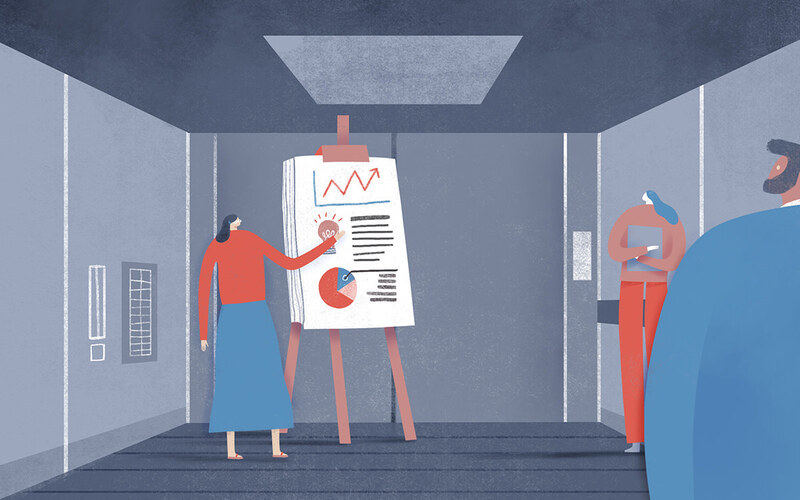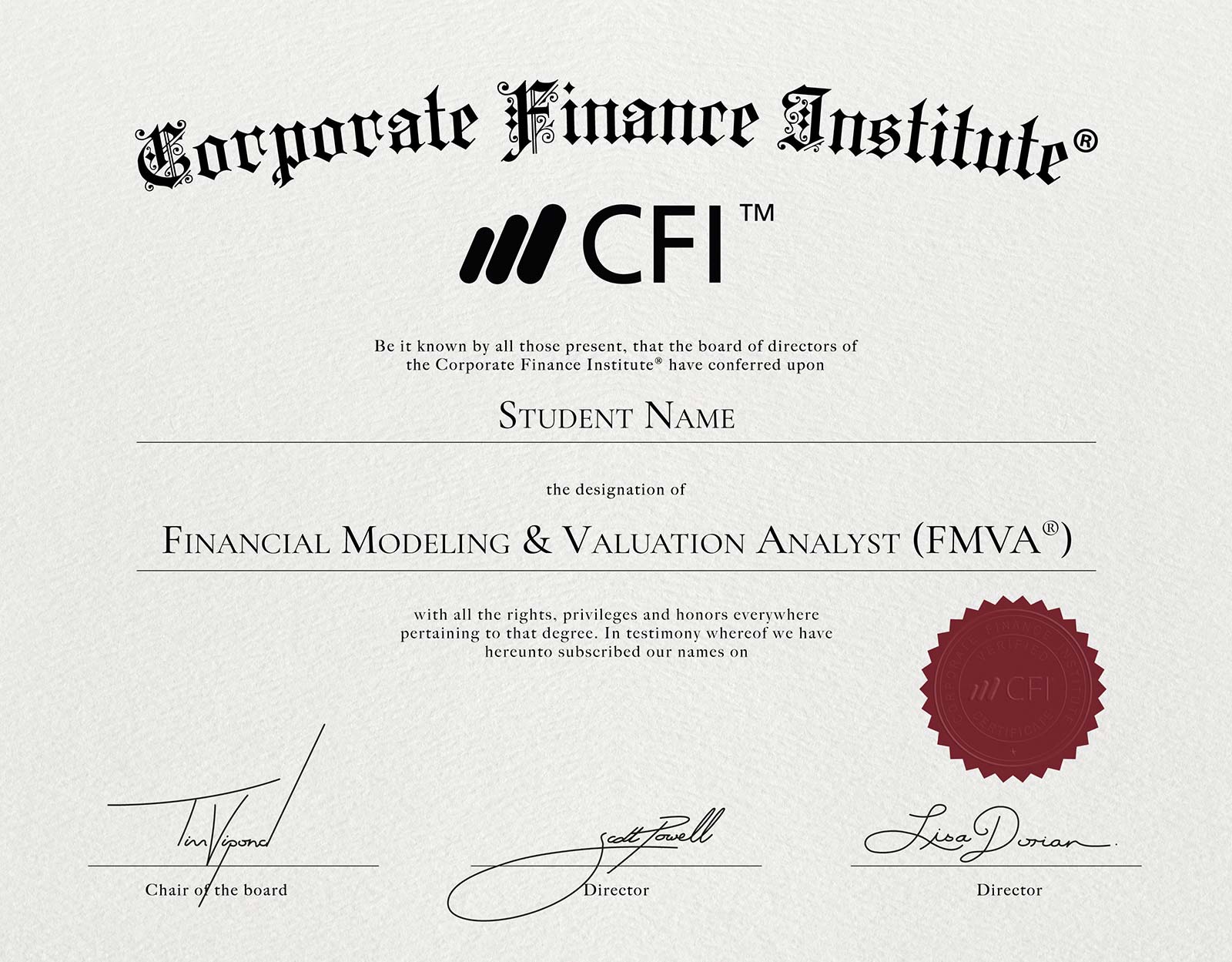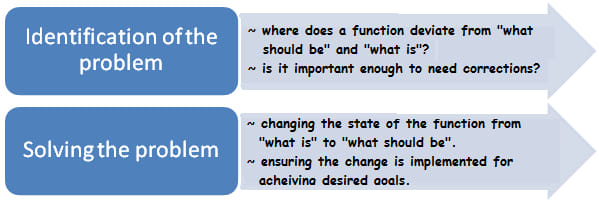Презентация лифта
Содержание:
- About the Technique
- Что такое elevator pitch
- Структура
- About Vanessa Van Edwards
- Когда пригодится прием elevator pitch
- How do I Write a Personal Elevator Pitch?
- What is an Elevator Speech?
- Кого и когда питчить: как происходит поиск инвестора
- Какие бывают питчи
- Why Do I Need an Elevator Pitch?
- What Is An Elevator Pitch?
- Tips to Effective Elevator Pitches
- What Not to Say and Do During Your Elevator Speech
- How the Elevator Pitch is Used
- What to Say
- Idea pitch
About the Technique
An elevator pitch is a brief, persuasive speech that you use to spark interest in what your organization does. You can also use them to create interest in a project, idea, or product – or in yourself. A good elevator pitch should last no longer than a short elevator ride of 20 to 30 seconds, hence the name.
They should be interesting, memorable, and succinct. They also need to explain what makes you – or your organization, product, or idea – unique.
When to Use an Elevator Pitch
Some people think that this kind of thing is only useful for salespeople who need to pitch their products and services. But you can also use them in other situations.
For example, you can use one to introduce your organization to potential clients or customers. You could use them in your organization to sell a new idea to your CEO, or to tell people about the change initiative that you’re leading. You can even craft one to tell people what you do for a living.
Что такое elevator pitch

Elevator pitch (в переводе с английского «презентация в лифте»)— это небольшой рассказ о сути реализуемого продукта либо услуги, который длится в течение 60–120 секунд. Как такая презентация связана с лифтом?
С 1950-х годов в Соединенных Штатах Америки молодые предприниматели встречали своих будущих инвесторов в лифтах высоток, где и рассказывали им о концепции своего бизнеса. Вспомнить хотя бы случай, который произошел с создателями «Гугл», Сереем Брином и Ларри Пейджем. Благодаря еlevator pitch они смогли убедить Энди Бехтольшайма, который опаздывал на важную встречу, прямо в лифте. В итоге он инвестировал в их фирму 100 000 долларов.
Смысл еlevator pitch в том, чтобы донести до вашего инвестора либо будущего партнера важность запуска вашего бизнес-проекта (онлайн-курса, детского центра, школы испанского языка), уложившись в то время, пока поднимается лифт. При этом у вас нет возможности показать на компьютере красочные таблицы, статистику роста проекта
Все, что вы можете использовать, — это жесты, харизму и правильно выстроенные фразы.
Структура
Имя + Фамилия + Выгода от работы с вами.
А теперь самое главное. Недостаточно перечислить ваши достижения (должность, образование, опыт, степени и т. п.), предоставив собеседнику самому догадаться, чем ваш послужной список может быть полезен конкретно для него. Перечисление ваших умений ― это инвентаризация, а выгод от этих умений — и есть самопрезентация. Ваша задача рассказать именно о выгоде. То есть ответить на вопрос «Зачем с вами сотрудничать?», а не «Почему?».
Для наглядности своей мысли я воспользуюсь FAB-концепцией (Features, Advantages and Benefits), которая лежит в основе популярной методики продаж. Вот коротко суть этой концепции. У каждого продукта есть свойства, преимущества и выгоды от его использования. Например, возьмем в качестве продукта низкокалорийный напиток «X».
- Свойство «Х»: низкая калорийность.
- Преимущество «Х»: напиток, позволяющий оставаться в хорошей форме.
- Выгода «Х»: к Новогоднему корпоративу выглядеть лучше, чем та коза из бухгалтерии.
Чувствуете разницу? Только последнее предложение отвечает на вопрос «Зачем?», в то время как первые два отвечают на вопрос «Почему?». В чем же секрет последней формулировки? Очень просто. При формулировании выгоды мы добавили эмоции.
Решение о покупке во многом основано на эмоциях. Клиенты покупают выгоды, а не свойства и не преимущества
Клиентам все равно, что умеет ваш продукт, им важно, чем он облегчит ИХ жизнь или решит ИХ боль. Общаясь с клиентом на языке выгод, вы продаете не продукт как таковой, а результат от его использования.
Примените эту концепцию к себе самому как к продукту. Выпишите десять наиболее значимых фактов о вас как о специалисте. Выберете из них два-три самых продающих и заполните таблицу.
Ваши свойства обозначим фразой «я имею», преимущества ― «я умею», а выгоды от сотрудничества с вами — «я помогу».
Пример выполнения Features Advantages Benefits Exercise (FAB-упражнения).
|
Свойства, «я имею» |
Достижения (преимущества перед конкурентами), «я умею» |
Выгода клиента «я помогу» |
|
Опыт работы в юридическом консалтинге … дцать лет |
Я консультирую малый бизнес, досконально разбираюсь в законодательстве |
Я помогу составить документы, защищающие ваш бизнес |
|
Степень MBA |
Я отлично мотивирую людей и разбираюсь в процессах управления |
Я помогу настроить бизнес-процессы в юридическом департаменте |
|
… |
… |
… |
Проверьте себя. Отвечают ли ваши выгоды на вопрос «Зачем к вам нужно обратиться?».
А теперь напишите одно предложение, которое будет отражать главную пользу от вашей деятельности. Будет отлично, если получится добавить эмоции. Используйте глаголы «помогаю», «укрепляю позиции», «соединяю», «ремонтирую», «приведу к нужному результату», «проектирую», «мотивирую», «строю», «развиваю», «упаковываю» и т. д.
About Vanessa Van Edwards
Vanessa Van Edwards is a national best selling author & founder at Science of People. Her groundbreaking book, Captivate: The Science of Succeeding with People has been translated into more than 16 languages. As a recovering awkward person, Vanessa helps millions find their inner charisma. She regularly leads innovative corporate workshops and helps thousands of individual professionals in her online program People School. Vanessa works with entrepreneurs, growing businesses, and trillion dollar companies; and has been featured on CNN, BBC, CBS, Fast Company, Inc., Entrepreneur Magazine, USA Today, the Today Show and many more.
Когда пригодится прием elevator pitch

Как быть в ситуации, если лифтом вы не пользуетесь и бизнес-партнеров находите в сети Internet? Для чего тогда нужен еlevator pitch?
Короткий рассказ о вас и вашем проекте потребуется в следующих ситуациях:
- нетворкинг на узкоспециализированных конференциях;
- коммуникация на выставках и бизнес-форумах;
- самопрезентация во время звонка по скайпу, при телефонном разговоре;
- участие в деловых завтраках, бранчах и ужинах;
- общение с потенциальными партнерами в соцсетях;
- представление ваших услуг в комментариях и постах;
- описание вашего проекта в интро, статусах и шапках Facebook, Instagram;
- общение со средствами массовой информации;
- самопрезентация на встрече с незнакомым человеком.
Представьте ситуацию, что на родительском собрании в школе вас попросили рассказать о себе и своей работе. Если вы сможете сделать это ярко и четко, то аудитория запомнит вас. Возможно, кто-то из присутствующих захочет стать вашим клиентом.
Необходимо проработать презентацию «в лифте», elevator pitch, кратко описывающая ваш бизнес, должна быть сохранена в вашем смартфоне или на ноутбуке. Такой рассказ будет полезен, если вы презентуете свой продукт или услуги инвестору или случайно встретили будущего партнера.
How do I Write a Personal Elevator Pitch?
Step 1: Write It Out
Simply put pen to paper and jot down the answers to the biggest factors in your professional life, including:
- What you do for work.
- What inspires you most about your work.
- What your greatest career achievements have been.
- What your career goals are.
- What you are looking to achieve in the future.
- What special skills you have that could benefit your future employer.
Step 2: Consider Your Value
Review the ways that your education can add to your value as an employee, including:
- The transferable skills you have gained while earning your degree.
- The special projects (research work, co-ops, etc.) you may have worked on.
- The way your university experience advanced your knowledge in the field.
Step 3: Seek The Input of Others
Connect with those you’ve worked closely with during your professional career, and ask them to identify what distinguishes you from others in your field.
Often it can be hard to objectively see what skills you have that have helped others or that impacted an organization. These might be skills that are part of your job description—such as success in garnering press for your company or exceptional coding abilities—or “soft skills” that add value in other ways. For example, you might be adept at building consensus among disparate groups, or at coming up with creative solutions to business obstacles. No matter their input, considering the opinions of those who know you best in the workplace can help you determine the most relevant points to include in your elevator pitch.
Step 4: Determine Your Motivation
Think through what you really want to achieve with your next career move and why—even before you start writing. Your elevator pitch should not just tell people what you have to offer, but also provide some insight into who you are and what motivates you. Feel free to jot down bullet points at this stage to help formulate your ideas.
Step 5: Prioritize
Establish the top two to three points you’d like to convey, and write out a sentence that properly highlights each point.
For example:
- I’m skilled at helping bring history to life.
- I was inspired to teach history by my fifth-grade teacher Mrs. Moss, who showed me how a great teacher can profoundly change your life.
- My students often ask tough questions, and I love the discussions those questions can open up!
Combine the above bullet points into a smooth, well-crafted pitch using transition points to help connect each idea. For example:
Step 6: Practice & Get Feedback
Read your elevator pitch out loud to yourself, then share it with a trusted friend or colleague for their honest input. Once you have gathered this feedback and feel comfortable speaking your statement out loud, you should begin actively using it at professional events to see how people respond. Noticing how those around you are interpreting your message will help you determine if or how you might need to adjust it moving forward.
Step 7: Polish Your Pitch
Refining your elevator pitch should be an iterative process, and it may require several versions before you feel comfortable with what you’ve written. If you get stuck, you might also consider asking a professional editor to help you hone your message.
What is an Elevator Speech?
An elevator speech is a kind of speech that is all about you. Usually, an elevator speech is done during job interviews since there are some human resource managers who would begin their job interviews with “tell me something about yourself”. It can tell about yourself because it is a speech that would tell about who you are, what you are capable of doing, maybe a couple of work experiences, what you want to do, and how can your capabilities benefit the company you are applying for.
Some would think that writing for an elevator speech is easy since it usually just consists of no longer than 25 to 30 seconds when you would be reciting it and when writing an elevator speech, it would often take 80 to 90 words or 8 to 10 sentences. But, just like the saying that goes “small but terrible”, writing an elevator speech could be overwhelming. Just imagine all the things that you could say about yourself and all the things that you have experienced in your life but you are only encouraged to say less than a hundred words. Difficult, right? However, you should not worry because there are ways on how you can write and deliver your speech without pressure.
Кого и когда питчить: как происходит поиск инвестора
Старайтесь искать инвестора, который может не только вложиться материально, но и дать свою экспертизу, инструменты, рекомендации. Просматривайте сделки на профильных ресурсах (Angellist,Crunchbase), релевантных инвесторов заносите в список, подробнее изучайте биографию и ищите точки соприкосновения. Это поможет впоследствии персонализировать питч.
Важны и общие знакомые, которые смогут сделать для вас warm intro (представить и порекомендовать). Роль warm intro может сыграть не конкретный человек, а ваше присутствие на мероприятии.
Например, я познакомился с Артуром Костеном из Booking.com на закрытой конференции, организованной Point Nine Capital и посвящённой маркетплейсам. Сейчас он один из главных инвесторов Preply.
Инвестору, в свою очередь, важно, чтобы стартап соответствовал его профилю
Изучите, какие сделки он заключает, на какие проекты обращает внимание, на каких стадиях инвестирования они находятся. Есть pre-seed — этап, во время которого тестируют команду и основные гипотезы
Этот период желательно продержаться на собственных ресурсах или вложениях от FFF (fools, family, friends)
Есть pre-seed — этап, во время которого тестируют команду и основные гипотезы. Этот период желательно продержаться на собственных ресурсах или вложениях от FFF (fools, family, friends).
Бывают дорогие высокотехнологичные продукты, которые невозможно протестировать без производства, в таких случаях идеальным сценарием становится попадание в акселератор.
Seed — этап тестирования бизнес-модели и подготовки к масштабированию, здесь действуют примерно те же принципы. А вот стадии series A, B, C, D — это уже те этапы, когда инвестиции направляются в рост.
Какие бывают питчи
В стартап-сообществе принято разделять питч на несколько форматов, которые получили отдельные названия.
- Elevator pitch условно длится одну минуту, на практике даже меньше: до 30 секунд. Это короткая презентация, которую можно было бы провести за время поездки в лифте.
- Idea pitch — другой формат, используется на конкурсах и ивентах. Это трёхминутный рассказ, в котором вы представляетесь, рассказываете о проблемах и их решениях, бизнес-модели, объёмах рынка.
- Funding pitch длится до 10 минут, в нём можно дополнить презентацию стратегией, деталями нынешнего положения, планами и объёмами необходимых инвестиций.
Питчами часто называют и письма инвесторам.
Why Do I Need an Elevator Pitch?
There are many uses for an elevator pitch. Some of the most common include:
In a Cover Letter: Use your elevator pitch as a way to either help you brainstorm the main points you want to touch upon in your letter, or use it within the actual text of your statement as a way of starting off strong. Using your pitch in this format is a fantastic way to highlight what drives you and what makes you special.
During an Interview: Often hiring managers will ask you to tell them about yourself during an interview. Having an honest, memorable, and well-thought-out answer can capture their attention and show that you know the value you can offer their organization. It can also help open a meaningful dialogue about what you’re looking for and whether this career opportunity will be the right fit for you.
At Networking Events: You’re likely to meet dozens if not hundreds of people at networking events, and having an authentic statement about yourself at the ready can help break the ice when starting a conversation. It can also help those you meet remember you and your accomplishments after the event has ended.
On Social Media: Use your elevator pitch to help build your personal brand on LinkedIn and on other professional networks.
What Is An Elevator Pitch?
An elevator pitch (also called an elevator speech or an elevator statement) is a quick yet convincing speech about yourself, your organization, your product, idea, goal, or project which you use to capture someone’s interest by explaining:
- What do you do?
- Why do you do it?
- For whom do you do it?
- What makes you unique?

As the name suggests, an elevator pitch is how you explain something in a nutshell. It is a perfect strategy to expand your network by convincingly sharing your credentials and expertise with the people who don’t know you.
Who Should Craft An Elevator Pitch?
An elevator pitch should be crafted by everyone who has to introduce himself to people often. Entrepreneurs craft an elevator pitch to sell their idea to prospective clients, investors, and partners. Job aspirants draft their elevator speech to form a good impression of themselves when asked: “tell me about yourself”. And salesmen create an elevator statement to close the deal as soon as possible.
People often craft an elevator pitch for themselves just to increase their network on Linkedin.

Even if you don’t have to introduce yourself or your business to people often, this is a good skill to master as being able to communicate about you and your work to others quickly and effectively always put a good impression.
Tips to Effective Elevator Pitches
There is a secret to a good elevator pitch which goes to the psychology of sales and marketing. Here are a few things you need to keep in mind:
Know Your Audience
Get your lead talking first so you can learn something about them and their pain points so you can tailor your pitch to fit their needs. For example, if Sally Smith learned that a small business owner was buried under papers, she could say, «Hi, I’m Sally Smith, a virtual assistant who helps small business owners get their ducks in a row. My clients scan their paper items and I organize and file them for them, saving them time, money, and clutter.»
Target Market
Like all other forms of marketing, the more you can speak to your lead’s needs, the greater the chance you’ll entice them to want to learn more about your business.
Less Is More
There’s a natural tendency to want to say everything about your business, but when you start getting into monologue territory, you risk boring or annoying your lead. Be pithy and hook your lead with information that will naturally lead them to ask about your business. Again, this is where describing your benefits, over your features can help.
Consider Leading With a Hook
A hook is an enticing statement that grabs attention. Your hook can be a question, such as, «You know how so many business owners waste time and money because they wear too many hats? I’m a virtual assistant that takes those hats so business people can focus on what they do best…make money.»
Or your hook can be a benefit statement, «I help business owners work less and make more.» Just saying that alone would likely have a business owner asking how you did that.
Create Opportunity for Follow Up
All marketing should provide you with a means of following up. That can come in the form of a call-to-action, in which your lead is asked to take a next step, such as, «Here’s my card with my website where you can get my free guide on working less and making more.»
Practice, Practice, Practice
Don’t just write and read your elevator pitch, speak it out loud and practice. It needs to sound natural when you say it, otherwise, you’ll come off as a salesman. When the opportunity comes, you want the pitch to flow like it’s a natural part of the conversation. If you can’t flow through the pitch, then rewrite it until it rolls off your tongue.
Like a business card, an elevator pitch is a quick, easy way to introduce your business to people you meet. But beyond just answering the question of, «What do you do,» you want to use your pitch to create interest in your business, and turn a lead into a prospect.
What Not to Say and Do During Your Elevator Speech
Don’t speak too fast. Yes, you only have a short time to convey a lot of information. But don’t try to fix this dilemma by speaking quickly. This will only make it hard for listeners to absorb your message.
Avoid rambling. This is why it’s so important to practice your elevator speech. While you don’t want to over-rehearse, and subsequently sound stilted, you also don’t want to have unfocused or unclear sentences in your pitch, or get off-track. Give the person you’re talking to an opportunity to interject or respond.
Don’t frown, or speak in a monotone way. Here’s one of the downsides to rehearsing: it can leave you more focused on remembering the exact words you want to use, and less on how you’re carrying yourself. Keep your energy level high, confident, and enthusiastic.
Modulate your voice to keep listeners interested, keep your facial expression friendly, and smile.
Don’t restrict yourself to a single elevator pitch. Maybe you’re interested in pursuing two fields — public relations and content strategy. Many of your communication skills will apply to both those fields, but you’ll want to tailor your pitch depending on who you are speaking to. You may also want to have a more casual, personal pitch prepared for social settings.
How the Elevator Pitch is Used
An elevator pitch is frequently memorized and practiced in advance by entrepreneurs who actively seek backers for their businesses idea. There are a variety of forums and events where such pitches are presented before an audience that may include potential investors. For example, startup incubator programs may conclude with a demo day event where a founding member of the team, often the CEO, will deliver the elevator pitch about the company.
In such an instance, the pitch will describe the “pain point” the team is attempting to solve, what approaches have already been attempted to resolve the issue, and what the startup has to offer that has not been tried before. Moreover, the pitch is intended to explain, in clear and direct terms, why the idea or product can succeed where other novel concepts have not.
Depending on the circumstances, some elevator pitches may be longer than the proverbial elevator ride and can go into greater detail about the team involved in developing the idea. The pitch may also provide more information about how the concept will be brought to market, ways it will grow a customer base, and what the broader market opportunities are for the concept.
Elevator pitches may be used at some events as a form of contest, where the presenters compete for prizes that might assist them in furthering their ideas. This can include nominal funding or business services and mentoring with business veterans. Regardless of winning such a contest, the opportunity to present their ideas before an audience of angel investors, venture capitalists, and other possible backers can be seen as a significant benefit of the pitch.
What to Say
Illustration by Maddy Price. The Balance, 2018
Your elevator speech should be brief. Restrict the speech to 30-60 seconds. You don’t need to include your entire work history and career objectives. Your pitch should be a short recap of who you are and what you do.
You need to be persuasive. Even though it’s a short pitch, your elevator speech should be compelling enough to spark the listener’s interest in your idea, organization, or background.
Share your skills. Your elevator pitch should explain who you are and what qualifications and skills you have. Try to focus on assets that add value in many situations. This is your chance to brag a bit — avoid sounding boastful, but do share what you bring to the table.
Practice, practice, practice. The best way to feel comfortable about giving an elevator speech is to practice it until the speed and “pitch” come naturally, without sounding robotic. You will get used to varying the conversation as you practice doing so. The more you practice, the easier it will be to deliver it when you’re at a career networking event or job interview.
Practice giving your speech to a friend or recording it. This will help you know whether you’re keeping within the time limit and giving a coherent message.
Be positive and flexible. You often aren’t interviewing for a specific position when you deliver your pitch, so you want to appear open-minded and flexible. Don’t lead with the stuff you’d rather not be doing. (For example, if you don’t want to travel a lot for work, that’s completely legitimate – but you needn’t volunteer that information right off the bat.) This is your chance to make a great first impression with a potential employer. Don’t waste it.
Mention your goals. You don’t need to get too specific. An overly targeted goal isn’t helpful since your pitch will be used in many circumstances, and with many different types of people. But do remember to say what you’re looking for. For instance, you might say, «a role in accounting» or «an opportunity to apply my sales skills to a new market» or «to relocate to San Francisco with a job in this same industry.»
Know your audience, and speak to them. In some cases, using jargon can be a powerful move — it demonstrates your industry knowledge. But be wary of using jargon during an elevator pitch, particularly if you’re speaking to recruiters, who may find the terms unfamiliar and off-putting. Keep it simple and focused.
Have a business card ready. If you have a business card, offer it at the end of the conversation as a way to continue the dialog. If you don’t, you could offer to use your smartphone to share your contact information. A copy of your resume, if you’re at a job fair or a professional networking event, will also demonstrate your enthusiasm and preparedness.
Idea pitch
Когда есть время на более подробную презентацию идеи, важно соблюдать последовательность подачи информации. Алгоритм следующий: кто вы, какую проблему решаете, каким образом, как на этом заработать, сколько всего можно заработать
В конце можно рассказать о команде, а если останется время — коротко подвести итог.
Распространенная ошибка этого этапа — выносить рассказ о команде в первый блок. Не нужно, представление должно быть кратким. Ещё одна ошибка — зацикливаться на деталях, которые важны только для вас. Не нужно рассказывать в подробностях, как вы решаете проблему, опишите только подход.
Если у инвестора будут вопросы — он их задаст. И, наконец, в рассказе о команде не нужно вспоминать о локальных конкурсах, которые никому не известны
Зато участие в акселераторах типа EastLabs, Techstars, Y Combinator — это как раз то, что может привлечь внимание
Как надо
Акцентируйте внимание на том, сколько можно заработать и как вы это определили. Само решение описывайте максимально кратко, не вдаваясь в технические детали и сложные термины













